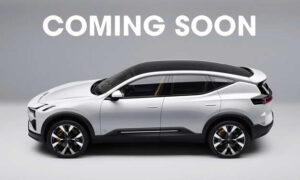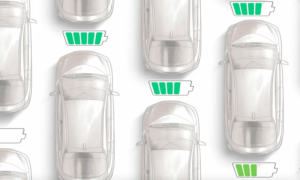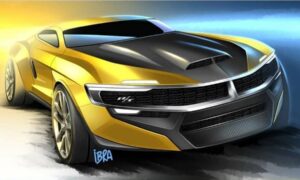
An electric vehicle (EV) is a vehicle that is propelled by one or more electric motors. It may be powered by a collection system, extravehicular sources of energy, or by a battery on its own (sometimes charged by solar panels, or by converting fuel to electricity using fuel cells or a generator). Road and rail vehicles, surface and underwater watercraft, electric airplanes, and electric spacecraft are examples of EVs.
EVs initially appeared in the late nineteenth century, when electricity was one of the favored ways of motor vehicle power, bringing a degree of comfort and simplicity of operation that gasoline automobiles of the period could not match. For over a century, internal combustion engines were the dominating propulsion system for automobiles and trucks, but electric power remained widespread in other vehicle types, such as railways and smaller vehicles of all sorts.
EVs have witnessed a comeback in the twenty-first century as a result of technology advancements and a greater emphasis on renewable energy and the possible decrease of transportation’s influence on climate change, air pollution, and other environmental concerns. Electric cars are listed as one of the 100 greatest modern solutions to climate change by Project Drawdown.

Government incentives to encourage adoption were initially implemented in the late 2000s, especially in the United States and the European Union, resulting in a booming market for the cars in the 2010s. Increasing public interest and knowledge, as well as structural incentives, like as those embedded into the COVID-19 pandemic’s green recovery, are projected to significantly boost the electric car industry. Lockdowns have lowered the quantity of greenhouse gases emitted by gasoline or diesel cars during the COVID-19 outbreak. According to the International Energy Agency, nations should do more to reach climate objectives in 2021, including regulations for large electric cars. Electric car sales might rise from 2% of worldwide sales in 2016 to 30% by 2030. Much of this increase is projected in regions such as North America, Europe, and China; according to a 2020 literature analysis, growth in the usage of electric 4-wheeled vehicles looks economically implausible in emerging nations, while growth in electric 2-wheeled vehicles appears likely. There are more two-wheel and three-wheel EVs than any other kind.

HISTORY
In 1827, Hungarian priest nyos Jedlik created the first rudimentary but functional electric motor, which employed a stator, rotor, and commutator, and used it to power a tiny automobile the next year. Professor Sibrandus Stratingh of the University of Groningen in the Netherlands created the first small-scale electric automobile in 1835, and between 1832 and 1839, Robert Anderson of Scotland invented the first rudimentary electric carriage powered by non-rechargeable primary cells. In 1835, Thomas Davenport, an American blacksmith and inventor, created a miniature electric train driven by a rudimentary electric motor. In 1838, a Scotsman called Robert Davidson created an electric locomotive capable of reaching speeds of four miles per hour (6 kilometers per hour). A patent for the use of rails as conductors of electric current was awarded in England in 1840, while Lilley and Colten received equivalent American patents in 1847.
In the early 1900s, the first mass-produced electric automobiles arrived in America. The Studebaker Automobile Company joined the automobile industry with electric cars in 1902, while it also entered the gasoline vehicle market in 1904. However, with the introduction of low-cost assembly-line vehicles by Ford Motor Company, the popularity of electric vehicles fell precipitously.
Electric automobiles were not popular at the period owing to a lack of electrical infrastructure and the constraints of storage batteries; nevertheless, electric trains were quite popular due to their economies and possible speeds. Because of advancements in the creation of electric locomotives, electric rail travel became ubiquitous by the twentieth century. Their general-purpose commercial usage dwindled over time, with platform trucks, forklift trucks, ambulances, tow tractors, and urban delivery vehicles such as the classic British milk float being the most common. For the most of the twentieth century, the United Kingdom was the world’s greatest user of electric road cars.
Because the motors did not use the precious oxygen in the mines, electrified trains were employed for coal transport. Due to a shortage of natural fossil fuels, Switzerland’s train network was rapidly electrified. Edison preferred one of the first rechargeable batteries, the nickel-iron battery, for use in electric automobiles.
Electric vehicles (EVs) were among the first autos, and before the dominance of light, strong internal combustion engines (ICEs), they held several vehicle land speed and distance records. Baker Electric, Columbia Electric, Detroit Electric, and others manufactured them, and they once outsold gasoline-powered automobiles. In 1900, electric vehicles accounted for 28% of all vehicles on the road in the United States. EVs were so popular that President Woodrow Wilson and his secret service agents drove about Washington, D.C. in their Milburn Electrics, which could go 60-70 miles (100-110 kilometers) on a single charge.
The majority of passenger vehicle manufacturers chose gasoline automobiles in the first decade of the twentieth century, although electric trucks were a well-established niche well into the 1920s. A variety of factors led to the drop in popularity of electric vehicles. Improved road infrastructure necessitated a longer range than electric cars could provide, and the discovery of large reserves of petroleum in Texas, Oklahoma, and California resulted in the widespread availability of affordable gasoline/petrol, making internal combustion powered cars more cost-effective to operate over long distances. Electric cars were often advertised as a luxury vehicle for women, which may have created a stigma among male purchasers. Also, because to the discovery of the electric starter by Charles Kettering in 1912, which removed the need for a manual crank to start a gasoline engine, and the usage of the muffler, which Hiram Percy Maxim designed in 1897, internal combustion powered automobiles became ever-easier to run. As highways outside of cities improved, electric car range could no longer match with that of the ICE. Finally, Henry Ford’s introduction of mass manufacturing of gasoline-powered vehicles in 1913 considerably decreased the cost of gasoline automobiles in comparison to electric cars.
National City Lines, a collaboration of General Motors, Firestone, and Standard Oil of California, acquired various electric tram networks around the nation in the 1930s to demolish and replace with GM buses. The partnership was found guilty of conspiracy to monopolize the sale of equipment and supplies to their subsidiary firms, but they were found not guilty of conspiracy to monopolize the supply of transportation services.
READ MORE- Our 2022 Honda Civic Si is getting ready for track days.



